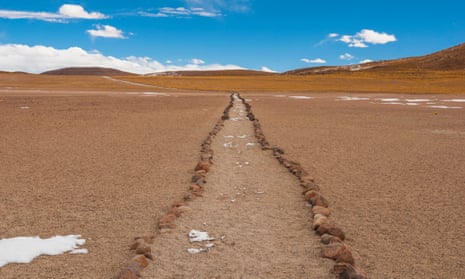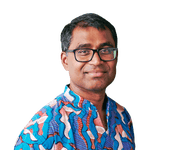Finally! After years of work the United Nations Summit has now passed the new Sustainable Development Goals (SDGs). On my way to the Big Apple and over the week that I have been here, I have been reflecting on the journey from the MDGs to the SDGs, and what it needs to make this agreement worth more than warm words. Here are some reflections on what needs to happen, on how we get from the M to S, from millennial to sustainable.
Metrics
When the idea of having a small number of objective targets to guide (falling) donor funding was first floated in the late 1990s, it was widely criticised for being overly reductionist. Nevertheless, the MDGs emerged as way of attaching some hard metrics to the commitments made by our leaders in the Millennium Declaration.
While the MDGs were narrow in their focus (poverty), and aimed primarily at what donors could do, and while they are hardly known outside international development circles, they have achieved something remarkable in the development community entrenching the idea of measuring progress through robust metrics, not just so that we can measure effectiveness for donors, but, more importantly, in order to promote accountability.
Indeed, one of the most exciting aspects of the SDG era is the focus on the so-called ‘data revolution’ for development. With it has come attention and investment in the capacity of all development actors to generate, use and curate data.
Although it may not attract much attention, for me, one of the most important events this week will be the launch of a new Global Partnership for Sustainable Development Data. Only if we get the metrics right will we have a chance of holding our leaders to account.
Nexus
The SDGs have a broader focus on ‘sustainable development’. And while climate campaigners have been critical of the fact that the SDG agreement is not legally binding, and instead focused on the upcoming climate negotiations in Paris, I see the SDGs presenting the best opportunity to create a broad platform that builds upon issue-specific commitments.
We need bold and binding targets for reducing emissions but we also need a comprehensive roadmap for achieving a number of interconnected global public goods: ending poverty, providing humanitarian relief, reducing inequality, and fighting climate change. Step forward the SDGs.
Ownership
If the SDGs are to have any chance of being achieved they will need to involve all stakeholders. Governments – in rich and in poor countries – will need to significantly change their behaviours if even a fraction of this ambitious vision is to be achieved. The private sector must contribute by adapting the way they consume and produce, by creating new technologies and by providing essential services. Civil society organisations need to look up from their specialist focus areas to the big, systemic changes required to achieve the SDGs’ vision.
But most importantly, the SDGs are intended to be owned by people. This is why the efforts by filmmaker Richard Curtis and his Project Everyone team to share the Global Goals with 7 billion people in 7 days have been so important. The SDGs need to become the people’s agenda and only then will they have a chance of changing the behaviours we need, from individuals reducing their consumption to governments fearing the political price for not meeting their commitments.
Power
If they are taken seriously enough, the SDGs can become a useful universal tool to be used to hold businesses, governments and civil society organisations to account; a tool to empower people all over the world to question what progress their governments have made towards these commitments.
For me, the SDGs are also a manifestation of another, more global power shift as well. These goals are not about the world’s rich countries promising to fix the problems of the world’s poorest. They are about what we all need to do to achieve the needs of people and planet. So the true test of their success will be how the US or Europe changes its own policies and practices to achieve the vision the SDGs lay out.
From the point of citizen action, the universality of the SDGs also creates opportunities to disrupt. I hope they will provide the basis for Ugandans to run campaigns on reducing consumption in the US, for Rwandans, who enjoy some of the highest rates of gender equality in the world, to intervene on gender rights in Saudi Arabia. These goals are about encouraging mutual accountability.
Quality of life
The SDGs are also an attempt to envision what quality of life every human being should enjoy by 2030. They should pave the way for enshrining the right to a minimum standard of living, a global social floor that no-one should fall below. No matter where in the world, these goals offer the right to be protected from extreme poverty, the right to food and water, the right to education, the right to be protected from the effects of environmental degradation.
At their Utopic extreme, the SDGs represent a collective global vision of what a good quality life for people and planet looks like, a radical departure from individualistic, nation-based strategies to something more universal and in harmony with the Earth’s needs.
Resources
Yet, perhaps the most obvious flaw in the SDGs was what bedevilled the MDGs in the first place: how to find the resources to back the warm words. If the resourcing challenges around the MDGs were huge (and eventually unachievable), the sorts of financial resources and structural changes needed to achieve the SDGs are eye-watering. And the new set of promises come at a time when states are broke or have sold off so many of the levers and resources they once had.
So, amidst the self-congratulatory speeches in New York in the coming days, the key test is how many feature details of what new resources – public and private – will be available to deliver on the vision.
SDGs
For better or worse, we will have the SDGs over the next 15 years. By moving beyond poverty, beyond aid, beyond what rich countries need to do and beyond a few development geeks, the SDGs are a huge step forward. But without implementation, this new global roadmap may not transport us very far from where the MDGs have dropped us off.
Dhananjayan Sriskandarajah is the secretary-general of Civicus, the global civil society alliance. He tweets at @civicusSG.
Join our community of development professionals and humanitarians. Follow@GuardianGDP on Twitter.

